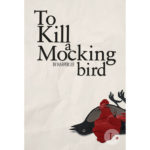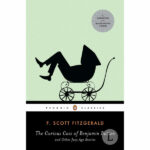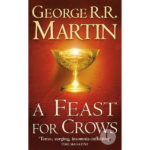F. Scott Fitzgerald’s The Great Gatsby, first published in 1925, is a masterful depiction of the Jazz Age, an era defined by extravagance, hedonism, and a relentless pursuit of wealth and pleasure. Set in the Roaring Twenties, the novel follows the tragic story of Jay Gatsby, a self-made millionaire who is consumed by his unrequited love for the enigmatic Daisy Buchanan. Through a cast of colorful and flawed characters, Fitzgerald explores themes of wealth, social class, and the illusion of the American Dream, revealing the moral decay lurking beneath the glittering surface of high society.
BOOK INFO
version: CLASSIC, EBOOK, AUDIOBOOK
number of pages: 180
literary movement: MODERNISM
literary genre: CLASSICS
1st edition: 1925
years of writing: 1923 - 1924
SUMMARY
Narrated by the novel’s morally grounded yet somewhat passive observer, Nick Carraway, The Great Gatsby delves into the lives of the Long Island elite, offering a glimpse into a world of lavish parties, opulent mansions, and a relentless quest for status. The novel’s central character, Jay Gatsby, epitomizes the rags-to-riches story and the pursuit of the American Dream. Driven by his obsessive love for Daisy, Gatsby amasses a fortune through dubious means, hoping to win her back and secure a place among the aristocracy.
Daisy Buchanan, the object of Gatsby’s affections, is a beautiful and wealthy socialite who represents the unattainable ideal for Gatsby. Married to the arrogant and unfaithful Tom Buchanan, Daisy embodies the superficiality and materialism that pervades the novel’s high society. Despite her apparent charm and allure, Daisy ultimately proves to be a selfish and careless character, unable to escape the confines of her privileged existence.
Through the character of Tom Buchanan, Fitzgerald critiques the callousness and entitlement of the old-money elite. Tom’s infidelity, racism, and indifference to the suffering of others reveal the moral bankruptcy of a class that prides itself on its wealth and social standing.
The novel’s exploration of wealth and social class is further underscored by the stark contrast between the opulent world of Gatsby and the Buchanans, and the desolate wasteland of the “valley of ashes,” a symbol of the moral decay and inequality that pervade the society. The “valley of ashes” serves as a haunting reminder of the darker consequences of the American Dream, as the novel’s characters are drawn into a web of betrayal, disillusionment, and tragedy.
MAIN CHARACTERS
Jay Gatsby
The novel’s enigmatic protagonist, Gatsby is a self-made millionaire who amasses his fortune in pursuit of the American Dream. Obsessed with winning back the love of his former flame, Daisy Buchanan, Gatsby throws extravagant parties and cultivates an air of mystery. Beneath his wealth and charm, Gatsby is a deeply romantic and idealistic character whose tragic downfall stems from his misguided pursuit of love and happiness.
Nick Carraway
The novel’s narrator and a distant cousin of Daisy Buchanan, Nick is a young, Midwestern man who moves to New York to work in the bond business. He rents a house next to Gatsby’s mansion and becomes entwined in the lives of the novel’s characters, serving as both an observer and participant in the story. Nick is morally grounded and somewhat disillusioned with the excesses of the Jazz Age, offering a contrasting perspective to the novel’s other characters.
Daisy Buchanan
A beautiful and wealthy socialite, Daisy is the object of Gatsby’s affections and the embodiment of his idealized vision of the American Dream. Married to the arrogant and unfaithful Tom Buchanan, Daisy is a complex character who is both charming and superficial, ultimately revealing her selfish and careless nature as the novel unfolds.
Tom Buchanan
Daisy’s husband and a wealthy, old-money aristocrat, Tom is an arrogant, callous character whose infidelity and entitlement contribute to the novel’s portrayal of moral decay among the elite. His racism, disregard for others, and aggressive nature further emphasize the darker aspects of high society.
Jordan Baker
A professional golfer and friend of Daisy’s, Jordan becomes romantically involved with Nick Carraway. She is a cynical, independent, and somewhat dishonest character who embodies the changing role of women in the 1920s.
Myrtle Wilson
The wife of George Wilson and Tom Buchanan’s mistress, Myrtle is a sensual, ambitious woman who seeks to escape her life of poverty and dissatisfaction. Her tragic death serves as a turning point in the novel, exposing the harsh reality beneath the illusion of the American Dream.
George Wilson
A struggling garage owner and Myrtle’s husband, George is a tragic figure who is ultimately destroyed by the infidelity and deception that surround him. His desperate attempt to uncover the truth and seek justice leads to the novel’s climactic tragedy.
Meyer Wolfsheim
A shadowy figure and Gatsby’s associate, Wolfsheim is a gangster involved in organized crime. He is believed to have played a role in fixing the 1919 World Series and serves as a symbol of the corruption and criminality that underpin Gatsby’s wealth and the American Dream.
And I like large parties. They’re so intimate. At small parties there isn’t any privacy.
F. SCOTT FITZGERALD
TOP 10 POINTS
- The American Dream: The Great Gatsby examines the concept of the American Dream, exploring the illusion of wealth and social mobility as a means to happiness and fulfillment.
- Wealth and Social Class: The novel delves into the lives of the rich and privileged, revealing the moral decay, superficiality, and materialism that lie beneath the surface of high society.
- The Jazz Age: Set in the Roaring Twenties, the novel captures the spirit of the Jazz Age, characterized by extravagance, hedonism, and a relentless pursuit of pleasure.
- The Pursuit of Love: Gatsby’s obsessive love for Daisy Buchanan drives the plot of the novel, as he amasses his fortune and throws lavish parties in an attempt to win her back.
- Moral Decay: The Great Gatsby exposes the moral decay and selfishness that pervade the lives of its characters, particularly those of the old-money elite.
- The Valley of Ashes: The novel contrasts the opulence of Gatsby’s world with the bleakness of the “valley of ashes,” a symbol of the darker consequences of the American Dream and social inequality.
- Illusion vs. Reality: Gatsby’s tragic downfall stems from his inability to see past the illusions of wealth, social status, and love, as he ultimately discovers the hollowness of the world he so desperately sought to join.
- The Unreliable Narrator: Nick Carraway, the novel’s narrator, serves as both an observer and participant in the story, offering a morally grounded perspective on the events that unfold while also revealing his own biases and limitations.
- Tragedy and Disillusionment: The novel culminates in tragedy and disillusionment, as the characters’ misguided pursuits of wealth, love, and social standing ultimately lead to their undoing.
- The Enduring Legacy: The Great Gatsby remains a timeless classic and a poignant reflection on the human condition, as it continues to resonate with readers nearly a century after its publication, offering a cautionary tale about the dangers of materialism, superficiality, and the pursuit of wealth at any cost.
MOVIE ADAPTATION
The Great Gatsby has been adapted into several films, the most notable of which are the 1974 version directed by Jack Clayton, starring Robert Redford as Jay Gatsby and Mia Farrow as Daisy Buchanan, and the 2013 version directed by Baz Luhrmann, starring Leonardo DiCaprio as Gatsby and Carey Mulligan as Daisy. In addition to these film adaptations, the novel has also been adapted for television, stage, and other media formats.
The Great Gatsby movie from 1974 is a film adaptation of F. Scott Fitzgerald’s classic novel of the same name. Directed by Jack Clayton, the movie stars Robert Redford as Jay Gatsby and Mia Farrow as Daisy Buchanan. Set against the backdrop of the Roaring Twenties, it tells the story of a mysterious and wealthy man who throws extravagant parties to win back his lost love. The film features stunning visuals and a memorable soundtrack, capturing the glamour and decadence of the era.
The Great Gatsby movie from 2013 is a modern adaptation of F. Scott Fitzgerald’s classic novel. Directed by Baz Luhrmann, the film stars Leonardo DiCaprio as Jay Gatsby and Carey Mulligan as Daisy Buchanan. The movie brings to life the opulence and decadence of the Roaring Twenties with its lavish visuals, stunning costumes, and anachronistic soundtrack featuring modern music from artists like Jay-Z and Lana Del Rey. The film tells the timeless story of love, wealth, and class conflict, and received critical acclaim for its stunning visuals and powerful performances.
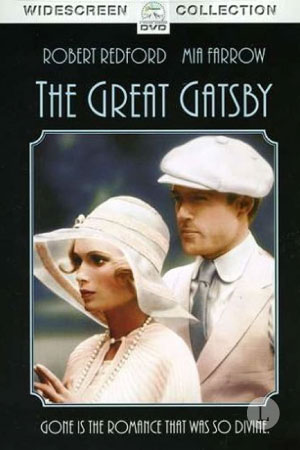
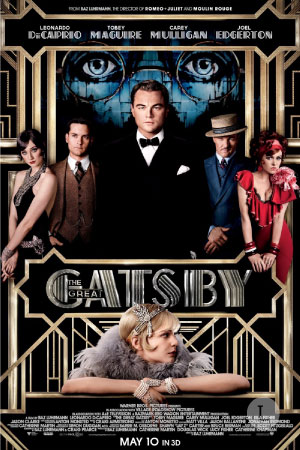
AT THE END
At its core, The Great Gatsby is a cautionary tale about the dangers of materialism, superficiality, and the pursuit of wealth at any cost. Gatsby’s tragic downfall ultimately results from his misguided belief that wealth and social standing can buy him love and happiness, as well as his inability to see past the illusion of the American Dream. Fitzgerald’s vivid portrayal of the Jazz Age, combined with his incisive social commentary and memorable characters, makes The Great Gatsby a timeless classic and a poignant reflection on the human condition.
ABOUT WRITER
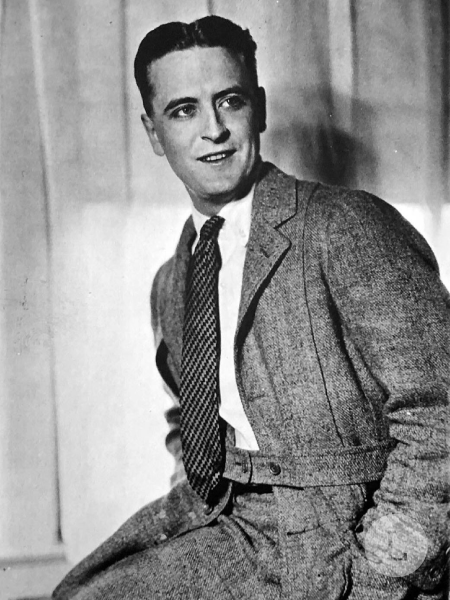
Francis Scott Key Fitzgerald was an American author celebrated for his novels and short stories that capture the spirit of the Jazz Age. His works, including The Great Gatsby and Tender Is the Night, are renowned for their lyrical prose, vivid characters, and exploration of themes such as wealth, love, and the American Dream. Through his writings, Fitzgerald left an indelible mark on 20th-century literature.

